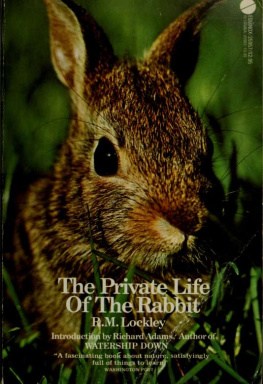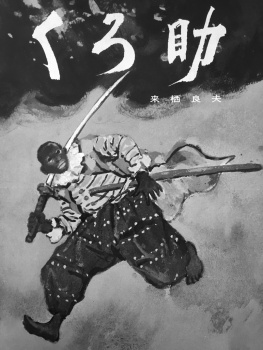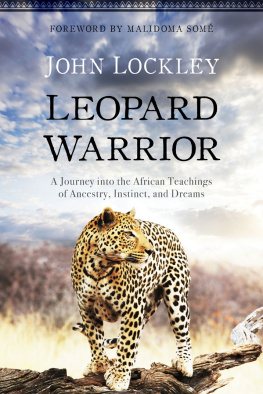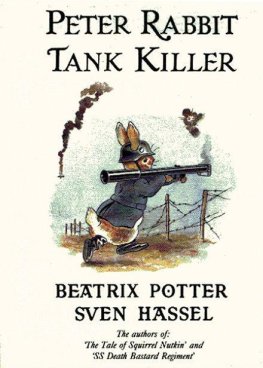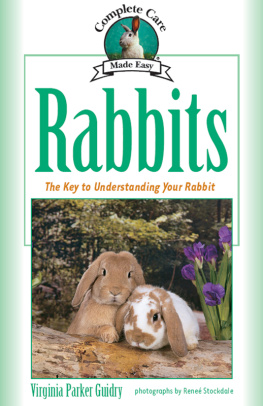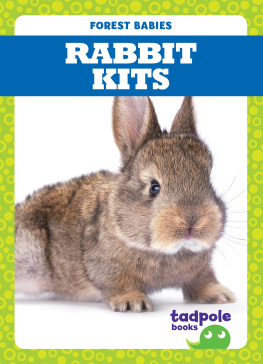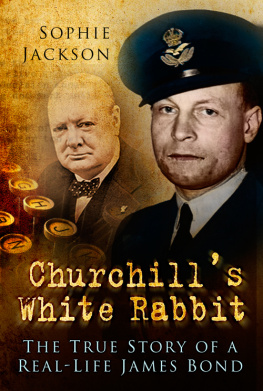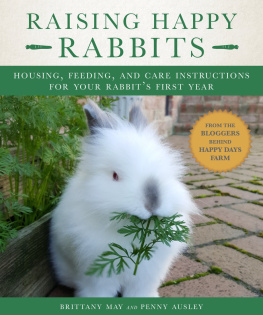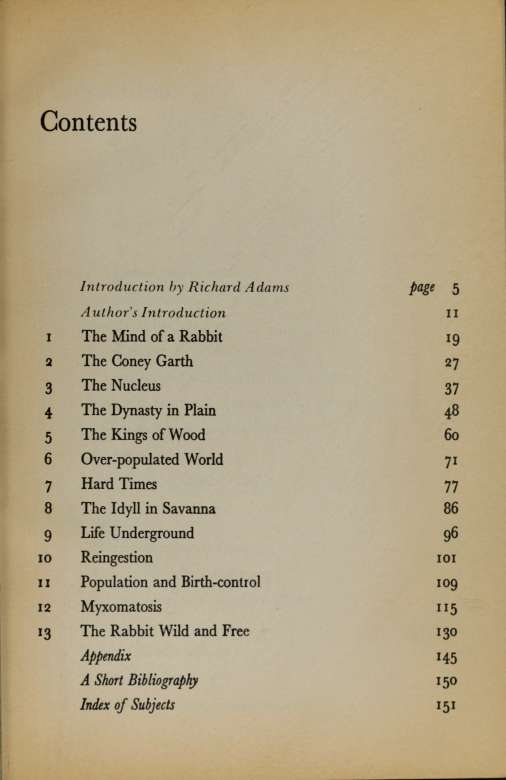This book made available by the Internet Archive.
Introduction by Richard Adams
To have been asked to write an introduction to the American edition of Ronald Lockley's The Private Life of the Rabbit gives me great pleasure, and I feel most grateful for this opportunity to expresspublicly, as it weremy own deep debt to this book and to its author. Most obligations originate from personal help and mine to Ron Lockley is no exception.
When I had finished telling the story of Watership Down to my children (the greater part of it was extemporized to while away a long car journey from London to the Shakespeare festival at Stratford-on-Avon) and had, at their insistence, agreed to shape and write it as a novel, I realized that before that novel could hope to possess any true dignity or authenticity, then in spite of being myself a country-dweller and nature-lover, I would need to know a good deal more about the ways and lives of real rabbits. Otherwise my rabbits would be little better than cute bunniesas too many other rabbits have become, once trapped between the ears of authors and the covers of their books. I went to a shop and looked on its shelves for a good, informative book about the English wild rabbit. Fortune was kind. What I happened upon was The Private Life of the Rabbit.
I quickly discovered not only how little I myself had hitherto known about "the rabbit wild and free," but also how little his true nature had been understood by the world in general. From Ron Lockley I learned that rabbits (as Strawberry protests to General Woundwort) had dignity and "animality"the quality corresponding to "humanity" in men and women. Their life pattern was fascinating and included several phenomena not generally known. Far from being childlishly cute, they possessed by nature great courage and resourcefulness within, as it were, the ambit of the limits, strength, and qualities given them by the Creator. (This I later tried to express in the story of the Blessing of El-ahrairah.) Nor were they nothing but runaways and "cow'rin', tim'rous beasties." They could and did fight their enemiesas well as each other. Incidentally, I learned, they had been anthropomorphically maligned. They were not unusually promiscuous and in many instances retained the same mate for life. (We should not, of course, think of this as particularly virtuous in an animalthat would be sentimentalbut it is an interesting fact and only shows how wrong we can all persist in being about an animal once we get an idea into our headslike the medieval notion that the pelican fed her young with blood by wounding her own breast.)
6 Introduction by Richard Adams
My hope is that Watership Down may play some part in leading the American public to read Ron Lockley's book and perhaps help a little to obtain for this exceptional work of observation and natural history the wide recognition it surely deserves. For me, it is the ideal of a popular work of natural historyscholarly, concise, fascinating, and readable. We hear much today about pollutionair, water, noise, and the likeand most people have rightly become highly conscious of our danger that we may spoil the world in this way. But since we are the most powerful of the world's inhabitants and therefore the world is our responsibility (not just the world we can do what we like with), we should be equally aware of another, related danger. We need to learn more fully how to understand and respect the animals, with whom we share the world. And as civilization advances (if it does), one of our more important responsibilities must be to look after the animals. Certainly we should control them and surely we may make use of them, but we should do these things thoughtfully and we must learn not to abuse or waste the animals. Perhaps we might bear more clearly in mind (as does Milton in Paradise Lost) that in the creation myth of the book of Genesis, the first task given to Adam was to name all the birds and beasts. Yet it would be no good tackling our task merely by being sentimental; an animal is an animal and not a sort of human being dressed up. Before we can act wisely we must appreciate the facts and see the animals as they really are.
Ron Lockley is no sentimentalist. What he has to offer is understanding based on patient, hardheaded observation. This is why The Private Life of the Rabbit exemplifies what a work of natural history should be. It is the book of an excellent naturalist, of a keen, shrewd, but feeling mind and above all of a truethat is to say, a sensitive, painstaking and clear-sightedlover of this beautiful earth (well, a lot of it is still beautiful, anyway) and of the "wondrous works of the Lord."
May 1974
u/toLji ALrr
PLATES (between pages 64 and 65)
1 Doe rabbit grazing
2 Orielton House, east front
3 Rabbit kittens, about nine days old
4 The enclosures as seen from the house, Orielton
5 Photograph and sketch plan of artificial underground warren
6 Rabbit family in the artificial warren
7 About five weeks old
8 Adult buck and immature rabbit
TEXT FIGURES
1 The study enclosure at Orielton 30
2 The artificial underground warren 31
3 Chick wing-tags for ear-marking rabbits 34
4 The box-warren, ASW 38
5 Rabbit in hostile attitude 40
6 Territories of bucks, 1955 43
7 Patrolling movements of dominant bucks 45
io Illustrations
8 The underground linking passages 45
9 Warrens and territories of bucks, 1956 52
10 Plan of Columbine's warren 53
11 Territories of bucks, 1957 63
12 Territories of bucks, 1958 65
13 Simplified plan of viscera of rabbit 105
14 Average live weights of 100 wild rabbits at Orielton 135
15 Life-span data 141
16 Skeleton of rabbit 147
Plates 1, 3, 7 and 8 are photographs by david Stephen
Author's Introduction
Ah, Coney base, Why do this harm, With baby face And whiskered charm!
The Coney in my cabbages' - e.l.g,
Why does the rabbit amuse and charm us? Most of us who are not farmers, foresters or occupiers of large gardens, smile indulgently at the sight of the rabbit in meadow, wood, or other wild environment, or in the well-fed confinement of a comfortable hutch. Perhaps the garden-poet, quoted above, may have touched on the reason?
The rabbit has a baby face, of rounded outlines, snub nose, enormous ears and eyes, and an appearance of helplessness. Konrad Lorenz has suggested that it is because of these attributes of infancy, this facial resemblance to the young human, that we - women and children especially - are pleased when we gaze at a rabbit. The fox, with its pointed nose, the badger with its pig-like profile, are less charming, even disliked and feared; we also remember the carnivorous habit of these and other long-nosed animals, and hold this, perhaps also subconsciously, against them. Yet the podgy faces of cub fox and baby badger delight us - again perhaps because of the childish appearance: rounded, helpless, without guile.

